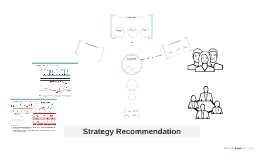GTM Template for Revenue Strategy
Transcript: Marketing Channels Sales Channels Retail, Online, Third-Party Marketing channels refer to the avenues used to communicate with and reach customers, including social media, advertising, and email campaigns. Sales channels represent the methods through which products are sold to customers, such as direct sales, online sales, and third-party retailers. Discuss the unique advantages and challenges of retail sales, online sales, and third-party partnerships in expanding market reach. Distribution Channels Customer Reach and Engagement Video Content Distribution Exploring Channels in GTM Strategy Explore the role of video content distribution channels in modern marketing strategies and their impact on consumer engagement and brand awareness. Distribution channels outline how products reach customers, encompassing wholesalers, retailers, and online platforms. Analyze strategies for effectively reaching and engaging customers through diverse channels to maximize brand visibility and sales opportunities. Understanding the key channels - distribution, marketing, and sales - is crucial for a successful Go-To-Market strategy. Channel Optimization Strategies Discuss the importance of continuously optimizing channel strategies to adapt to changing market dynamics and consumer behaviors. International Distribution Expansion Omnichannel Approach Discuss the considerations and strategies involved in expanding distribution channels internationally to tap into global markets and reach diverse customer demographics. Examine the benefits of an omnichannel approach in integrating multiple channels for a seamless customer experience and increased conversion rates. Challenges in Channel Management Identify common challenges in channel management, such as channel conflicts, coordination issues, and maintaining brand consistency across channels. Exploring Sources of Revenue Understanding the key pillars that drive revenue generation and profitability within the business ecosystem. Adapting to Market Trends Secondary Sources of Revenue Adapting revenue strategies in response to market trends and consumer behavior shifts for sustained competitiveness. Exploring the supplementary streams that contribute to the overall revenue, including partnerships, licensing, or advertising revenue. Additional Revenue Opportunities Main Sources of Revenue Revenue Forecasting and Planning Monitoring Revenue Performance Identifying untapped avenues for generating additional revenue, such as upselling, cross-selling, or diversification strategies. Identifying the primary channels through which the company generates its revenue, such as product sales, service fees, or subscription models. Utilizing forecasting models and strategic planning to predict revenue patterns and optimize future financial outcomes. Implementing strategies to monitor and evaluate revenue performance to make informed business decisions. Optimizing Pricing Tiers Adapting Pricing for Segment Needs Adjusting pricing based on segment needs ensures that each customer group perceives the value of products or services offered. By responding to specific segment requirements, businesses can enhance customer loyalty and satisfaction levels. Creating pricing tiers for different segments allows businesses to cater to various customer needs and willingness to pay. By offering tiered pricing structures, companies can maximize revenue and attract a broader customer base. GTM Template for Revenue Strategy Revenues for Expansion Leveraging Technology for Revenue Segmentation Criteria Exploring the role of technology in enhancing revenue streams and leveraging digital tools for revenue generation. Understanding Segmentation Criteria Assessing the financial inflows required for future expansion projects and strategic initiatives. Segmentation criteria include demographics, psychographics, and behavioral patterns used to identify distinct customer segments. Understanding these criteria helps businesses customize pricing strategies for targeted groups effectively. Segmentation criteria are vital for tailoring pricing strategies to different customer segments. By defining clear criteria, businesses can effectively categorize customers based on their needs and behaviors. Driving Profitability Maximizing Revenue Streams Strategizing methods to maximize existing revenue streams through optimization and innovation. Analyzing how revenue sources align with profitability goals and sustainable business growth. Analyzing Sources of Revenue and Pricing Models Competitive Pricing Analysis Analyzing competitor pricing strategies involves assessing price points, discount structures, and overall value proposition to identify competitive advantages and pricing gaps. Value-Based Pricing Developing Effective Pricing Models Value-based pricing focuses on setting prices according to the perceived value of a product or service to the customer. This strategy aligns pricing with what customers are willing to pay based on

















